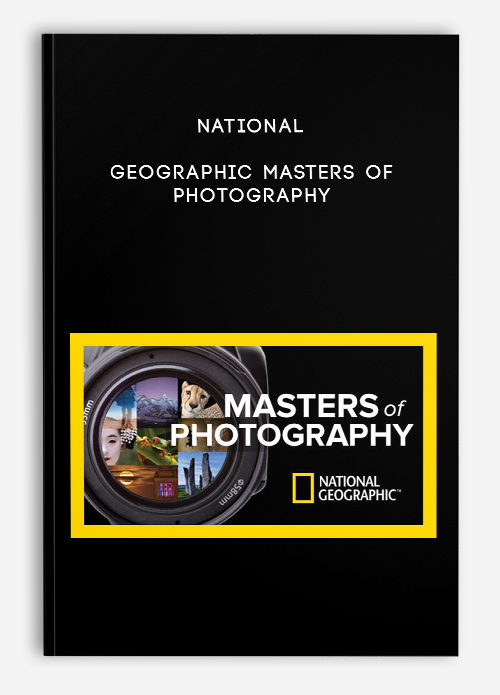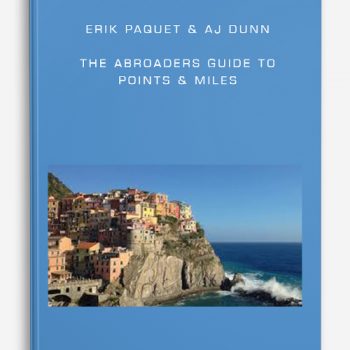
National Geographic Masters of Photography
Description
File size: 11.43 GB
Photography is an art. We can all take photos, now more than ever, but to rise above the level of a snapshot, you have to go beyond shooting and hope for the best. You need to really understand what you are doing and anticipate the results.
Hide Full Description
The best way to learn any art form, including the art of photography, is by observing a master artist at work. By observing the creative process of a photographer who has truly mastered the craft, you can gain rich insight into how to approach your own images, increase your confidence as you work, and enhance your photographs by learning skills that are rarely shared or taught in an ordinary classroom.
Now at National Geographic Masters of Photography – 24 lectures by 12 top National Geographic photographers – you get unrivaled access to some of the best photographers in the world. Through our association with National Geographic, the gold standard in photography for more than a century, we are able to collaborate with some of the organization’s most talented photographers. As a result, we’ve assembled a dozen world-class experts for this unique instructive series that will forever change the way you approach photography.
National Geographic Masters of Photography enters the creative process of the industry’s most sought-after photographers as they reveal their working methods, from the planning stages of a task to painstaking execution. Through 24 fascinating lessons, each professional uses their vast body of work documenting exotic places around the world, as well as fascinating stories from life in the field, to illustrate points and share invaluable experience. As you explore your craft in units of Adventure, Wildlife, Landscape and Nature, People, Color and Light, and Storytelling, your guides will take you far beyond the territory of Photography 101 to terrain you would never cover elsewhere, Unless you land an apprenticeship with a photographer of this caliber. These lessons also cover fundamental concepts of lighting, composition, and using your camera, but they are really designed to help you learn to see how the best professionals do and ultimately discover your own personal vision.
Each unit is presented by a pair of photographers, exposing you to diverse perspectives on how to achieve compelling results. In the end, you will come to see that having a good camera and knowing how to use it is important, but it is only a tool. Taking great photos requires technical skill as well as preparation. As Michael Yamashita says, “The difference between a good photograph and a great photograph is often a matter of inches or milliseconds.”
After completing this course, you will possess a refined set of tools and knowledge that you can use to dramatically improve your photography, whether you are using an expensive camera or your phone’s camera.
Elevate your photography with essential tips
In this visual feast of a course, learn about the elaborate process National Geographic photographers go through, both technically and artistically, from researching and planning a shoot to working on a scene and waiting, often for hours, for the elements. suitable for gathering.
Guided by multiple experts, you will explore in depth the three key elements of great photography: good light, good composition and a moment, as well as how to take advantage of the concepts and principles of composition that they depend on every day. You will find specific techniques for:
taking action shots;
chronicle of family life;
making moving portraits;
creating eye-catching silhouettes;
shooting in various weather conditions;
taking advantage of the light at dawn, dusk and every moment in between; Y
get closer and work with the subjects.
Every time you look through your lens, you will be referred to the secrets that these top professionals share to build an extraordinary image, such as:
drawing the viewer with main lines and S curves;
showing scale to convey a sense of vastness;
using the rule of thirds to construct well balanced images;
using layers to create depth and interest; Y
lighting scenes effectively, whether your source is the sun, a flashlight, event lighting, or your camera flash.
With these tips, everyone from the beginner to the consummate hobbyist will find ideas to improve their photography skills. At the end of each presenter’s session, they will be inspired to step out and apply their new knowledge based on a task outlined by the photographer.
Travel around the world through photography
The Scottish Isles. Paris. The Niger Delta. Papua New Guinea. Take a dazzling visual journey to these places and many more as you join these globetrotters to see behind the scenes what happened in getting the photo – and the problems some encountered abroad.
Even if you are already an expert photographer or simply an art appreciator, the gripping images and stories these esteemed experts share make the experience worthwhile. From stopping stories of surviving freezing temperatures in Antarctica to risking life and limbs to document the perpetrators and victims of human trafficking, the experiences and worlds that will be revealed to you are nothing short of fascinating.
In the Adventure section, Cory Richards takes you high up in the Himalayas and deep into the sea, while Stephen Alvarez takes you to remote places that no one has ever witnessed before.
In Wildlife, Steve Winter demonstrates how understanding animal behavior informs his work, then Joel Sartore shows him how to apply his knowledge to not only highlight animals, but also potentially make a difference on their behalf.
In the Landscape unit, Jim Richardson takes you from the Hebrides of Scotland to the American West, demonstrating how he experiments to work a shot. Michael Yamashita draws parallels between Japanese gardeners and landscape photographers, showing how both use light and color to direct the eye.
In the section on People, Jodi Cobb explains how she gains access to hidden worlds, from geisha houses in Japan to Bedouin women’s tents in Saudi Arabia. Then Ira Block describes how he builds relationships with people from other cultures, even in the most hostile environments.
In Color and Light, Michael Melford describes the four types of light photographers they seek, but shows that it is possible to work with any type of light, with enough perseverance. Annie Griffiths communicates the joy of experimenting with color to evoke an emotional response.
In Storytelling, William Albert Allard uses images from his 50-year career to illuminate how he can incorporate time and place to tell stories visually. Conclude with Ed Kashi by discussing types of storytelling, from advocacy journalism to how digital photography and the internet enable new types of storytelling.
A master class with 12 best photographers
To say that National Geographic Masters of Photography is visually stunning would be an understatement. Words simply cannot do justice to the spectacular images presented by the 12 master photographers in this course. Impressive, impressive, and at times shocking and heartbreaking – his work represents the pinnacle of the art form.
Beyond revealing trade secrets and providing you with a toolbox brimming with techniques that you’ll put into practice every time you lift the camera, these lessons offer a personally enriching journey like no other.













tristian –
This is Digital Download service, the course is available at Coursecui.com and Email download delivery.